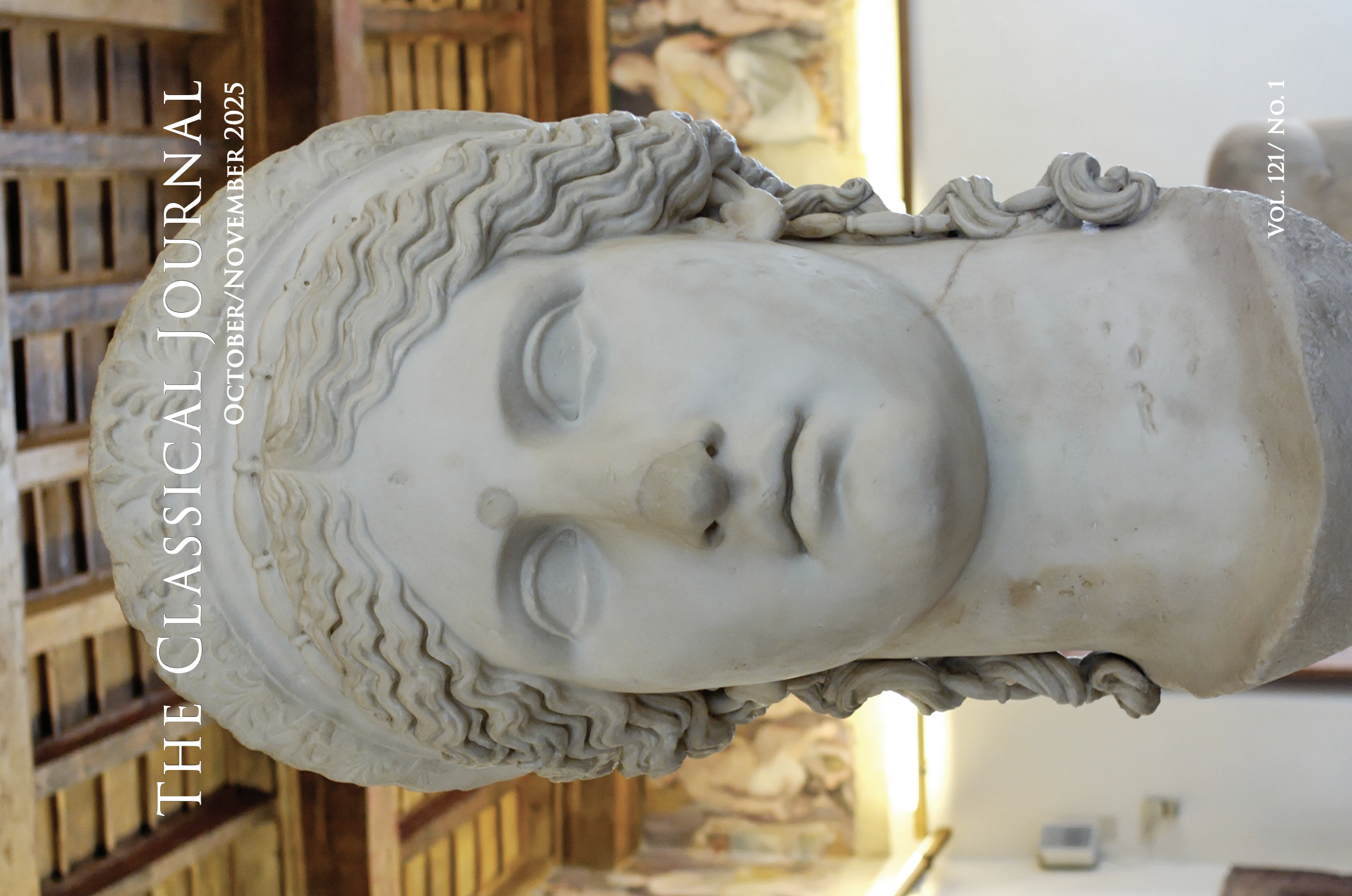The following articles are contained in CJ
116.2
Abstracts of Articles
The Immortality Theme in the Odyssey and the Telegony
This article examines the different ways in which the Odyssey and the Telegony represent the relationships between immortals and mortals—the immortality theme. They draw upon that common theme but inflect it in contrasting ways: whereas the Odyssey’s protagonist rejectsimmortality and embraces mortality, the protagonist of the Telegony does the opposite. In the end, though, both of these poems critique immortality. Analysis of these poems’ different inflections of the immortality theme provides insights into how themes could be used competitively in archaic Greek poetry as well as how the same theme operated similarly and differently in various traditions.
Pindar's Poetic "I" and the Muses: Metaphorical Role Characterization in Different Genres
This paper offers a fresh perspective on the representation of the Muse(s) in Pindar. Two recent studies addressing this issue have argued for a clear distinction between the epinikia and the cult songs. This paper aims to reassess this approach and to offer a different perspective on the problem, focusing on the metaphors applied to the relationship with the Muse(s). While the image as drawn by Kantzios and Maslov emerges as simplistic, some of the metaphors can be linked to the given genre because they are based on analogies to the context of performance, which also enhance the cognitive effect of the poems.
Brasidas and the Un-Spartan Spartan
While Brasidas is often singled out as a particularly un-Spartan Spartan and is clearly presented as such by Thucydides, there were many other Spartans, including in the pages of Thucydides, who matched Brasidas’ innovation, energy and ambitious foreign policy. Thucydides overemphasizes Brasidas’ un-Spartan characteristics and downplays his similarities to other Spartans such as Gylippus in order to make Brasidas the exception that proves the rule. Thucydides’ treatment of Brasidas is therefore another important element in the historian’s methods of characterizing states and individuals.
An Explanation for the Addition of the Aureus to the Roman Imperial Coinage System
The addition of the aureus to the Roman imperial coinage system has not yet been fully explained, but a convergence of four factors in the 40s bce explains this coin’s introduction and continuation. First, the use of gold coins as a medium of exchange and store of value was easily comprehensible for Romans. Second, the civil wars in the 40s and 30s provided the need for a high value coin so the generals struck numerous aurei. Thirdly, Romans perceived a need for more media of exchange during the debt crisis of the 40s so the coin was readily accepted into common use. Finally, the mint continued to produce aurei to pay the imperial army.
Claudius the Censor and the Rhetoric of Re-Foundation
Explanations for why Claudius chose to revive the censorship in 47 ce after its long abeyance have hitherto failed to account fully for its coincidence with the reproduction of the Secular Games in the 800th anniversary of the founding of Rome and its relationship to the pomerial expansion of 49. I argue that these events are united by an ideological thread, that Claudius was attempting to legitimize his principate by appropriating the rhetoric of re-foundation first deployed by Augustus to explain and justify his extraordinary honors and powers. Claudius used the censorship, its various ancient prerogatives, attendant affiliations with figures from the distant past and other rites of renewal to present himself as a new re-founder of Rome.


